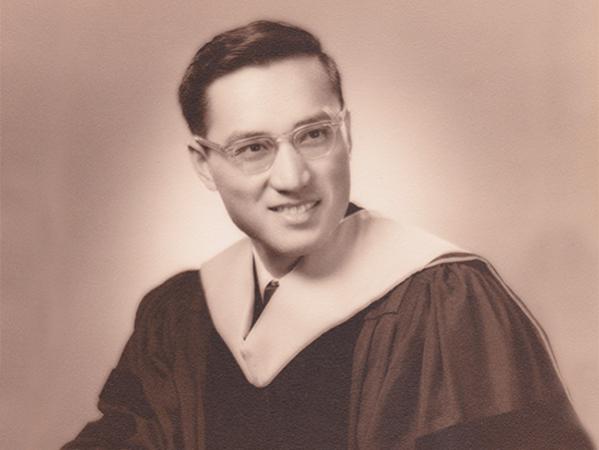
Samuel W. Ing, 1932 – 2018
The Samuel W. Ing Fund will support MIT graduate students on a new path to fusion.
July 31, 2018
In memory of MIT alumnus Samuel Ing, his family has established a Memorial Fund to support graduate students at MIT’s Plasma Science and Fusion Center (PSFC) who are involved in the Center’s push to create a smaller, faster and less expensive path to fusion energy.
Born in Shanghai, China in 1932, Samuel Ing received a BS, MS and ScD in Chemical Engineering from MIT in 1953, 1954, and 1959 respectively, mentored by Prof. Thomas Sherwood. Eventually joining Xerox Corporation in Webster, NY, he rose from senior scientist, to principal scientist to senior vice president of the Xerographic Technology Laboratory in the Webster Research Center. He spent most of his career in western New York State with his wife Mabel, whom he had met at an MIT dance, raising four daughters: Julie, Bonnie, Mimi and Polly.
An innovator and advocate for new technologies, including desktop publishing, Samuel Ing became intrigued with MIT’s approach to creating fusion energy after attending a talk by PSFC Director Dennis Whyte at the MIT Club in Palo Alto in February 2016. His daughter Emilie (Mimi) Slaughter (MIT BS and MS, Electrical Engineering, ’87, ’88) later expressed her own enthusiasm to her father when, as a member of the School of Engineering Dean’s Advisory Council, she heard Whyte speak in the fall of 2017.
In pursuit of a clean and virtually endless source of energy to fulfill the growing demands around the world, MIT has championed fusion research since the 1970s, designing compact tokamaks that use high magnetic fields to heat and contain the plasma fuel in a donut-shaped vacuum chamber. The PSFC is working on a new high-field, net fusion energy experiment: SPARC. Researchers are using a thin superconducting tape to create compact electromagnets with fields significantly higher than those available to any other current fusion experiment. These magnets would make it possible to build a smaller, high-field tokamak at less cost, while speeding the quest for fusion energy.
Mimi Slaughter remembers her father’s passion for innovation and entrepreneurship.
“It’s the MIT culture — I see that in the fusion lab - the idea of just doing it; figuring out a way to try to make it happen, not necessarily through the traditional channels. I know my Dad agrees. He did that at Xerox. He had his own lab, creating his own desktop copiers. That grew out of what he experienced at MIT.”
The Ing family celebrates that creative spirit with the Samuel W. Ing Memorial Fund for MIT graduate students who will be driving the research and discovery forward on SPARC. It was a class of PSFC graduate students that proposed the original concept for this experiment, and it will be the young minds with new ideas that, with the support of this fund, will advance fusion research at MIT.
To quote Sam Ing, “Very interesting technology. It has a tremendous future, and if anyone can do it, it’s MIT.”
Topics: SPARC, Dennis Whyte